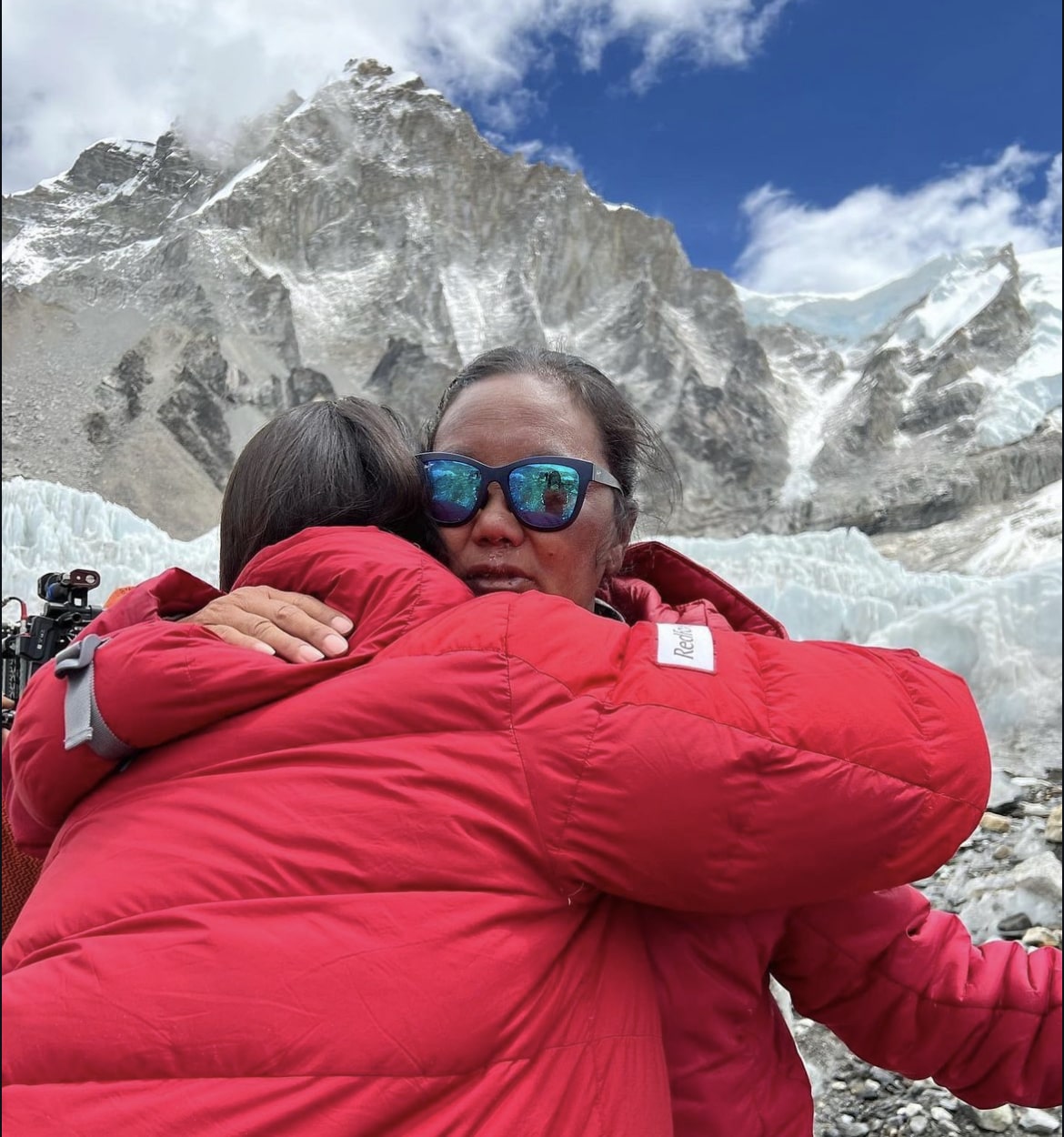
A powerful documentary about Nepalese-American climber Lhakpa Sherpa hit Netflix on July 31. The 1 hour 44, 44-minute documentary weaves an emotional yet visually stunning narrative around the most accomplished female climber, Lhakpa Sherpa. Sherpa has summited Everest a record-breaking 10 times, which in itself is an incredible feat. However, what makes this documentary so powerful is that she accomplished this while being subjected to domestic violence as an illiterate immigrant to America by her Romanian-American husband, George.
Lhakpa Sherpa was born to a yak-farming family in a small village in Nepal in 1973. The movie effortlessly jumps between present day and flashbacks of Sherpa’s life and weaves a tapestry that is so much more powerful than the movie title implies. Sherpa has gotten to where she is despite all odds. In Nepal, she fought an upbringing where only boys could go to school, rendering her illiterate into adulthood, misogyny within the Sherpa community and a culture where only men would become porters, let alone climbers who could attract sponsors, to become the first Nepali woman to ever summit and return alive from Mount Everest in 2000. (Pasang Lhamu Sherpa was the first Nepali woman to ever climb Everest but tragically perished on the descent when the weather turned and she ran out of oxygen and food.)
However, Lhakpa Sherpa’s incredible story only starts here. In 2001, Lhakpa worked at Everest base camp, where she met Romanian-American climber George Dijmarescu, who took her along on his climb, resulting in Lhakpa Sherpa’s second Everest summit. She married George and moved with him to America, and went on to climb Everest for the third time, which brought her the Guinness Book Record for most climbs by a female in 2003. In 2004, George and Lhakpa co-led the Connecticut Expedition to Everest, which became a turning point for her. Dijmarescu, who had already been displaying aggression towards his Nepalese wife the prior year, ended up punching Lhakpa Sherpa, rendering her unconscious. The ordeal was witnessed by a reporter and photographer on the Connecticut Expedition, and the whole disastrous story of the successful yet ugly expedition was ultimately published in a book by Michael Kodas in 2006. At that point, Lhakpa had summited Everest a total of six times, but after the book was published, George refused to take his wife along. The violence and abuse Lhakpa and her two daughters suffer at the hands of George in a country where she only has a limited command of the spoken language and none of the written language isolates her and prevents her from breaking free from the shackles of an abusive relationship.

After a particularly vicious beating, Lhakpa Sherpa seeks help and ends up in a shelter with her two daughters and escapes her abusive marriage. While her two daughters feature quite significantly in the documentary, they may initially seem like an afterthought to Lhakpa Sherpa’s accomplishments. Sherpa is, after all, the record-holder for the most Everest climbs. But there are no accolades, public recognition, or honorary statues for her. Sherpa leads a menial life, working in Whole Foods, and living in a tiny apartment her younger daughter Shiny is embarrassed of. Sherpa’s two daughters perfectly embody the personal growth the small family goes through. The younger daughter is more compliant but still embarrassed by her mom, who she accompanies on her tenth climb, while the older, almost catatonic daughter, Sunny, seems sullen and angry, shunning the opportunity to visit her mother’s home country, meet family, and part of her mother’s tenth climb. But the apple does not fall far from the tree, and Sunny’s resilience shines through towards the end of the documentary, as she breaks through the post-traumatic depression and looks at herself in the mirror, proclaiming, “I see you. I seem someone that can be something!”
It is a powerful movie of resilience, the human spirit, and determination against all odds. It manages to deliver its message without a preachy narrator but rather quietly through the faces, words, and expressions of Lhakpa and her daughters, Sunny and Shiny. Aside from shining a spotlight on the with a modest yet genuine protagonist, the documentary does not fail to showcase Mount Everest in all its glory, making it a feast for the eye as well as the soul.
